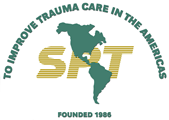Menu
Log in


PANAMERICAN TRAUMA SOCIETY
SOCIEDAD PANAMERICANA de TRAUMA
TRAUMA REGISTRYANNOUNCEMENT!Virginia Commonwealth University (VCU) is working with our Information Technology staff on services, repair and upgrade for the Trauma registry platform. Currently the TR is not available effective August 31, 2022. For more information please contact Gladys Shanklin at gladys.shanklin@vcuhealth.org |
© Panamerican Trauma Society/Sociedad Panamericana de Trauma
Powered by Wild Apricot Membership Software